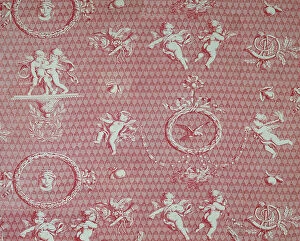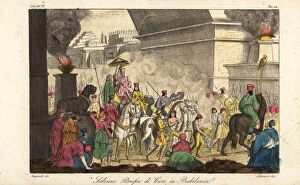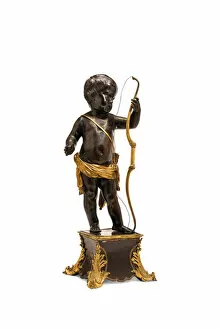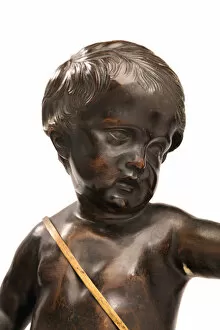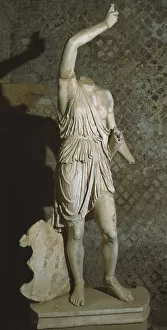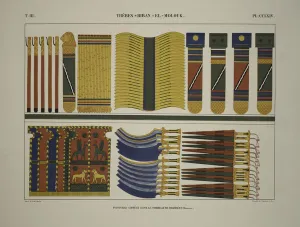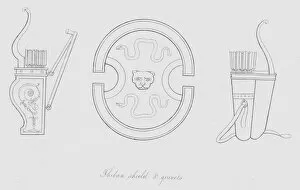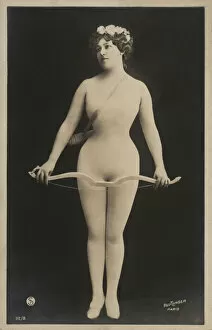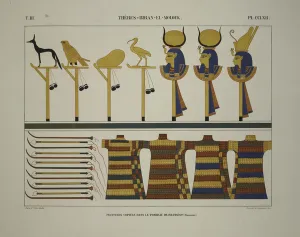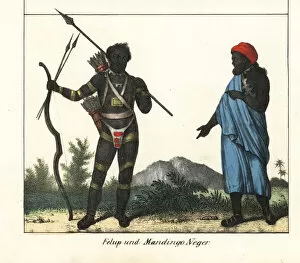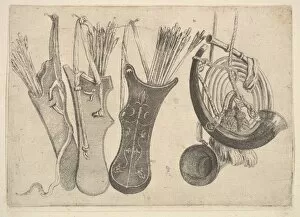Quivers Collection
Quivers have long been a symbol of power and skill, dating back centuries to the Bowman at the Battle of Zutphen
For sale as Licensed Images
Choose your image, Select your licence and Download the media
Quivers have long been a symbol of power and skill, dating back centuries to the Bowman at the Battle of Zutphen. In this vivid colour lithograph, we witness the intensity and precision with which archers wielded their bows and quivers in battle. The mid-17th century bronze statues depict standing children carrying bows and quivers, showcasing the importance of these tools even in youth. With gilding and tortoiseshell embellishments, these pieces highlight the craftsmanship that went into creating such essential accessories for archery. Moving forward to France in 1810, Christophe-Philippe Oberkampf's Furnishing Fabric titled "Amorini et Medallions" features Cupid holding a bow and quiver. This design exemplifies how they were not only practical but also incorporated into artistry as decorative elements. In ancient times, even marble sculptures like Amazon showcased strong female warriors equipped with bows and quivers. These depictions serve as a testament to the significance of these accessories in warfare throughout history. An engraving titled "An exact representation of a curious collection of remarkable weapons" showcases various types of weaponry including quivers. This image provides insight into the diverse range of designs used by different cultures across time. "Cupids Darts, " captured beautifully in a colour photograph, presents an enchanting scene where love is personified through arrows held within delicate quivers. It reminds us that beyond battles they can also represent emotions such as desire or affection. Historical events are often depicted through art forms like oil paintings; one example being "Entrance of King Cyrus of Persia into Babylon. " Amongst all regalia present during this grand entrance procession stands out Cupid's bow and arrow - his trusty companion always nearby in its ornate quiver. Venus herself is often portrayed alongside her son Cupid wielding his bow and arrow. In c.

